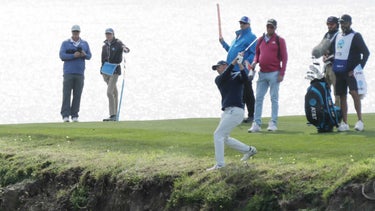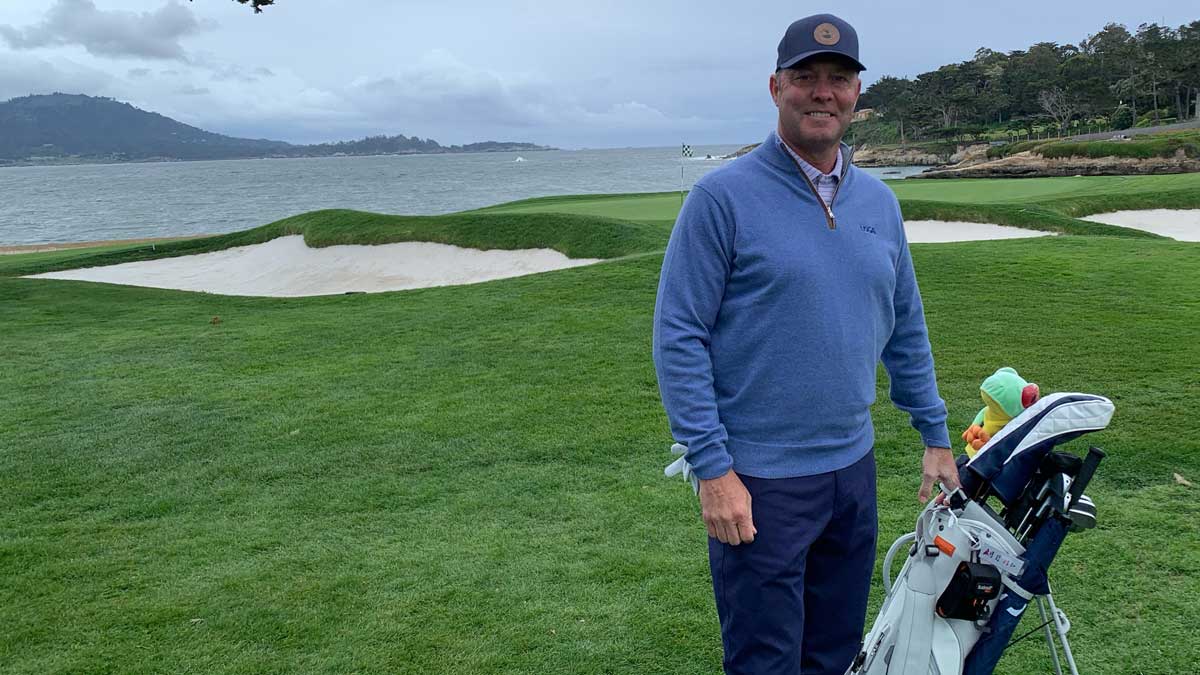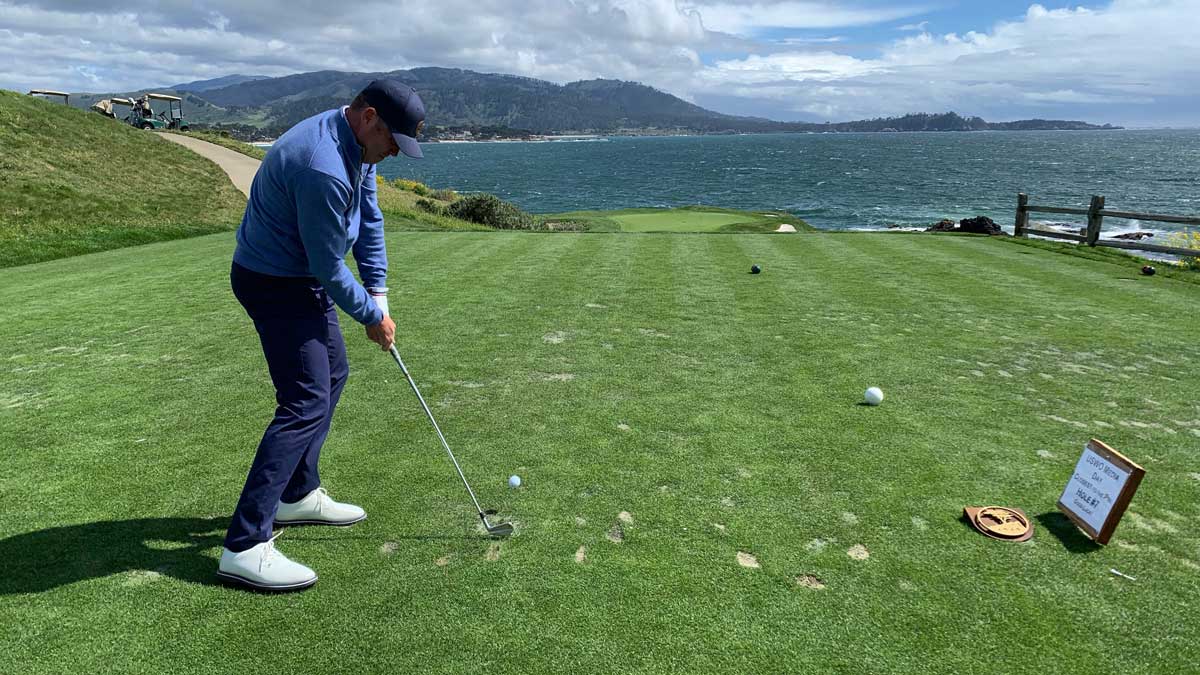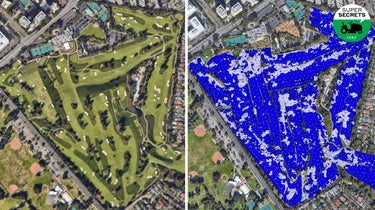A consistent pre-shot routine is a primary key to playing good golf. Here’s a seamless way to incorporate one into your game. The post Simplify your pre-shot routine with these 3 easy steps appeared first on Golf. A consistent pre-shot routine is a primary key to playing good golf. Here’s a seamless way to incorporate…
Mike Whan is cool with mulligans, and other lessons from playing with the USGA chief

Mike Whan is not like other golf executives who’ve come before him. Here’s what it’s like to play a round with the USGA chief.
The post Mike Whan is cool with mulligans, and other lessons from playing with the USGA chief appeared first on Golf.
Mike Whan is not like other golf executives who’ve come before him. Here’s what it’s like to play a round with the USGA chief.
The post Mike Whan is cool with mulligans, and other lessons from playing with the USGA chief appeared first on Golf.
Given his lead role at the game’s rules-making body, you might think the CEO of the United States Golf Association would have a stickler’s habit of counting every stroke and recording every score. But that would mean you don’t know much about Mike Whan.
It’s a wind-whipped afternoon at Pebble Beach Golf Links, the flagsticks bending, the pine boughs groaning, and the Grand Poobah of golf guardians has snap-hooked his drive on the 2nd hole, his first hole of the day in a shotgun outing. Barely has the ball settled in the rough when Whan pulls another orb from his bag.
“I’m gonna go again,” he says.
In his willingness to reload, Whan contrasts with his predecessor, Mike Davis, a rulesbook literalist who no sooner would have allowed himself a mulligan than he would have played with non-conforming clubs.
Whan is unlike Davis in many ways. At an institution that has never been accused of being too relaxed, he is unlike anyone to hold his post before.
His unconventional profile for a USGA figurehead was no secret to either party when Whan signed on for the top job in 2021. In fact, it was a driving force behind the deal. Fresh off a transformational 11-year tenure as LPGA commissioner, during which he dramatically expanded the circuit’s schedule and purses, Whan was looking for new challenges. His new employer was looking for change.
In Whan, the USGA found the inverse of the dandruff-dusted fuddy dud of Far Hills caricature: an extroverted Everyman with a knack for branding, the energy for ambitious initiatives and an unbuttoned style that applies to everything from his manner in board meetings to his stance on breakfast balls.
“I didn’t get to hit the range,” Whan says, teeing up his second. “That’s my excuse, anyway.”
He knows that it’s a poor one. It’s not as if he hasn’t had a chance to groove his swing.
This blustery outing in Monterey is the final leg of a multi-day golfapalooza, punctuated for Whan by two rounds of preview play at a pair of upcoming USGA championship venues. The day prior was Los Angeles Country Club, host site of next month’s U.S. Open; today is Pebble, which in July will stage its first-ever U.S. Women’s Open — a watershed moment for a women’s game that Whan has championed for the past decade-plus.
The personal connection runs even deeper because Pebble, Whan says, “is my favorite place in the world.” Whether it’s also his favorite course on the planet, even the forthright Whan is too politic to say.
But those aren’t the kind of details he dwells on anyway. He’s a big-picture guy, and what the big picture shows is that Pebble has committed to not just one but four U.S. Women’s Opens in the coming decades, and that other storied men’s major venues (Oakmont and Merion among them) have also lined up to host the event.
“To have the women playing on these historic stages sends a powerful message,” Whan says.
Having made the most of his mully, he is standing in the fairway, studying a long approach. Though it morphs into a par-4 for the U.S. Open, the 2nd hole at Pebble is a par-5 in everyday play, and that’s how it will play for the women in July. Whan could tell you that. But he couldn’t tell you much else about course setup. Mowing heights and hole locations aren’t his thing.
“Those are Mike Davis questions,” he says.
He coils and whacks a hybrid. His shot, riding a gust, clears a distant barranca and settles just shy of the green.
At 58, Whan has a sturdy, athletic build. His swing is solid, too, if nowhere near as polished as those of past USGA chiefs who began their golf careers as accomplished amateurs. Where, for instance, PJ Boatwright Jr. was a two-time winner of the Carolina Open, and Davis captured the Pennsylvania junior state crown, Whan didn’t even play golf in high school, in Illinois, because it conflicted with his main sport, football.
Not that he was godly on the gridiron, either. But as an undersized quarterback, he showed a strength that has since become a signature.
“I remember the coach telling my dad, ‘He’s not big enough to be a lineman, and he’s not fast enough to be a receiver,’” Whan says. “‘But there’s one thing he’s really good at, and that’s getting the ball into the hands of better athletes.’”

After graduating from Miami University of Ohio with a degree in business, Whan followed his father’s footsteps to Proctor & Gamble, where he proved himself adept at marketing toothpaste while entertaining dreams of a career in sports.
As a kid, he’d caddied.
“I hated standing around watching people play golf,” Whan says. “I also didn’t like being quiet.”
As an adult, he found a better fit at Wilson Sporting Goods, running the company’s golf-ball division, before moving on to TaylorMade and, later, to the head post at a hockey-equipment company. In 2010, shifting from the ice back onto turf, he took the helm at the LPGA Tour.
Whan’s popularity in that role owed in no small part to the pumped-up prize money that came under his watch. But it also had to do with his approachability. Every LPGA player had his cell phone number, and Whan encouraged them to dial direct.
At the USGA, he has taken a similarly personable tack, insisting on face-time to shatter walls between long-siloed departments, and assigning nicknames to staffers and board members alike. In Whan’s cell phone contacts, “Stretch” is the tall guy from merchandising, while “McDreamy” is the young hire with the great hair who reminds Whan “of that dude from the hospital show.” The playful monikers are meant to cultivate what Whan calls “locker-room camaraderie.”
There are, in the meantime, more tangible goals. Top line items include a series of BBLI’s, Whan’s acronym for big, bold, leadership initiatives. One is a campaign to endow the Walker Cup. Another is the U.S. National Golf Development Program, aimed at supporting promising juniors. A third, known as 15/30/45, is the USGA’s $30 million commitment over the next 15 years to help courses reduce water use by 45 percent.
The game may be in a good place now, Whan says, but it can’t afford to act fat and happy. He points toward bowling as a cautionary tale. A couple generations back, the PBA was must-see Saturday TV.
“It was two cameras, one venue. The networks loved it, and we all knew who Earl Anthony was,” Whan says. “Then what happened? No national development program. The whole big-box retail thing replacing alleys. You can’t be complacent. If we don’t address the big issues, if we don’t figure out water, distance and how to better embrace alternative forms of the golf, there’s no guarantee we don’t become like bowling 50 years from now.”
In the shorter term, at Pebble, Whan needs to figure out the wind. He has reached the famous seaside 7th, a pint-sized par-3 that requires no more than a sand wedge in calm conditions. Trying to gauge the gusts, Whan attempts a mid-iron knockdown but hoods the shot instead, long and left into the water. On the next hole, the epic par-4 8th, with a daredevil second shot over a gorge, he airmails his approach, chips back into a bunker and winds up with double-bogey 6, assuming we concede him the slippery three-footer that he swipes away.

According to GHIN, the USGA’s official handicapping site, Whan plays to a 5, and if today that seems like reverse-sandbagging, well, that’s golf.
“Remember,” Whan says, grinning, “we’re just measuring your potential.”
Besides, this isn’t an outing that calls for him to grind. By his own account, Whan can turn up the intensity when he needs no. He plays all kinds of golf: charity fundraisers, club matches with no gimmes, twilight hit-and-giggles with music cranked. He’s a cross-over figure. In New Jersey, he belongs to historic Baltusrol, but his home club is Hamilton Farm, which has two modern courses that Whan thinks are terrific even if he’s unsure who designed them.
“That’s another Mike Davis question,” he says.
(Answer: Mike Hurdzan and Dana Fry).
As for Pebble, its original designers were Jack Neville and Douglas Grant, and it first welcomed play in 1919. Preserving its integrity — as well as that of other classic courses — is part of the intent behind the USGA’s proposal for a rolled-back golf ball, which it announced this spring, kicking off a period of public feedback that, like many aspects of his new-ish post, Whan sees as a good test of the thickness of his skin.
“When I took this job I said, You know, I like being liked, I don’t like being hated,” he says. “But I’m willing to give it a shot.”
Thus far, he says, the feedback in his inbox has been 50/50.
“I get messages from people telling me they hate it,” Whan says. “But also people saying, Finally, someone’s doing something about this, please don’t stop.”
Whan shrugs. So it goes in governance. He just wants it understood: “We’re not out to have the average player hit it shorter. We’re only looking at the ball the elite levels of the game.”
Like most golfers, Whan does not need reining in. On a good drive, he can fly it about 245, which is what he does on the par-4 11th, before short-siding himself in a green-side bunker and making a sandy mess. The afternoon is growing long. Dark clouds have gathered off the coast. Whan marches on, collecting a mixed bag of pars, bogeys and others.
On the par-3 17th, he gets up and down for three and then splits the fairway on 18.
The temperature has dropped. A mist is in the air that might be rain drops or salt-spray carried by wind. A three-wood, wedge and three-putt later, Whan has completed the last hole in the routing. But since he started on the 2nd hole, he hasn’t finished playing 18.
“You guys go on without me,” Whan says to his partners.
Don’t tell Mike Davis, but his successor beelines for the bar without posting a score.
The post Mike Whan is cool with mulligans, and other lessons from playing with the USGA chief appeared first on Golf.


